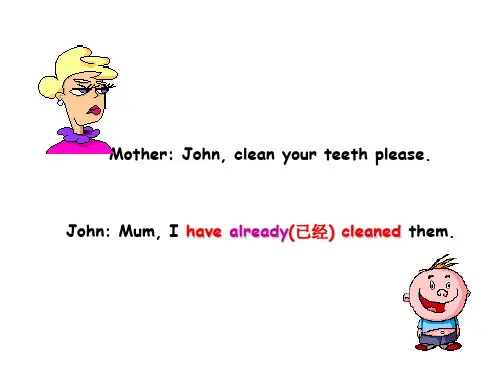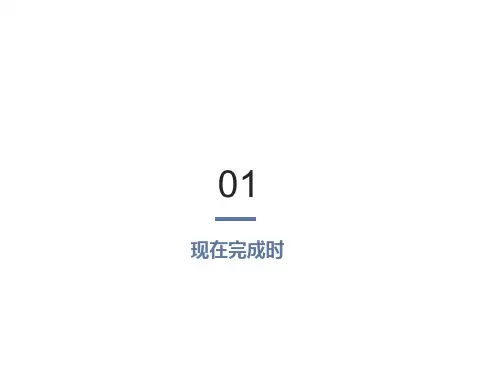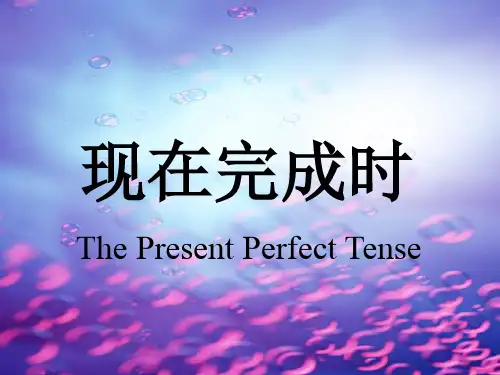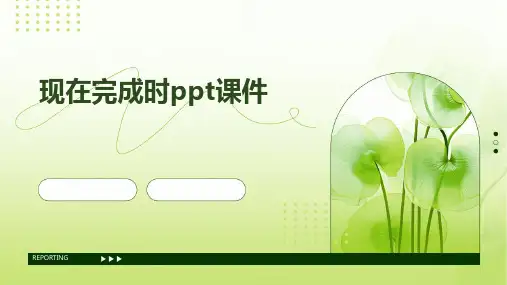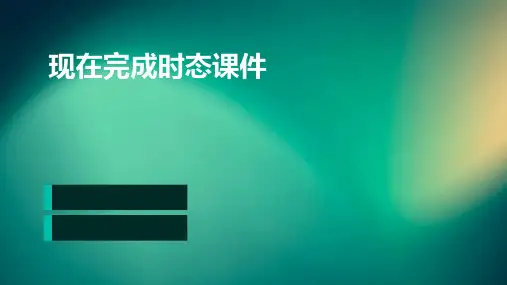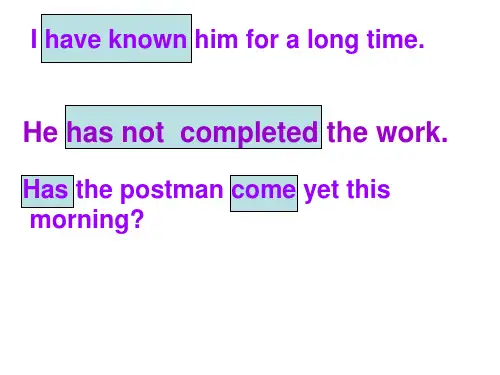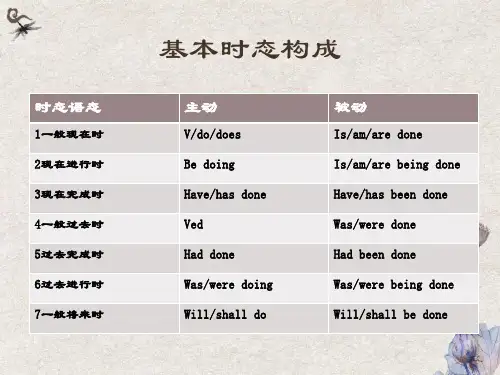4. 和when, before, after, as soon as, until/till 等引导的状语
从Th句e 连ai用rp或la用nhea于d_从__句__中__ already _______(leave)
when I
left
Lasgtotnitgohtt,heasaisropoonrta.s hIad_______________
I saw them reading books when I came into the classroom.
After I finished my homework, I went out to play.
8. We a_r_r_i_v_e_d____(arrive) at the station before two
o’clock.
Fill in each blank with the proper verb form:
1. After he ____f_i_n_i_s_h_e_d___ (finish) his work, he
过去完成时与现在完成时二者用法基本相同,但现在完成时以 现在时间为基点,过去完成时则以过去的时间为基点,与现在
无关,即过去的过去。过去完成时常用于宾语从句中;
单击此处添加大标题内容
用法:表示过去某一时间和动作之前已 经发生或完成
了的动作或一直持续的动作(过去的过 去)。
By the end of last term, we had learned 600 English words.
过去完成时态
The Past Perfect Te n s e
单击此处添加大标题内容
一. 现在完成时态表示过去发生的动作对现在造成的影响或结果 ○ Our teacher has left. ○ We have studied English. ○ I have already finished the homework. ○ He has had his lunch. ○ He has become a doctor.

